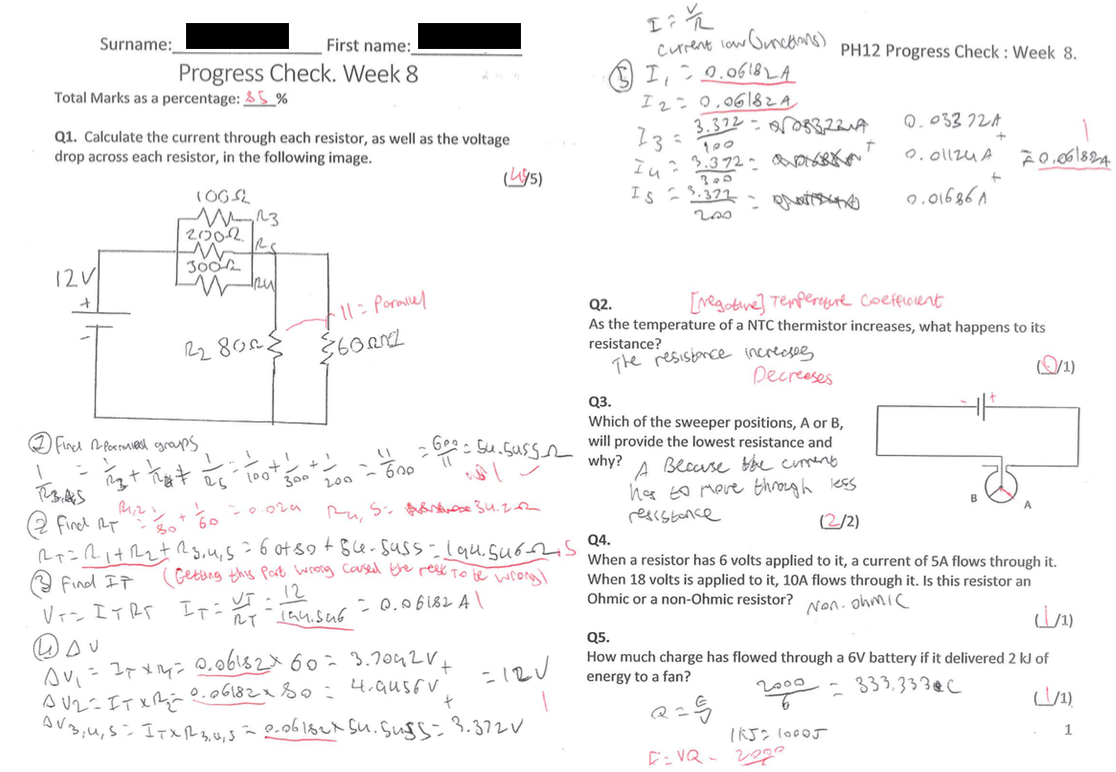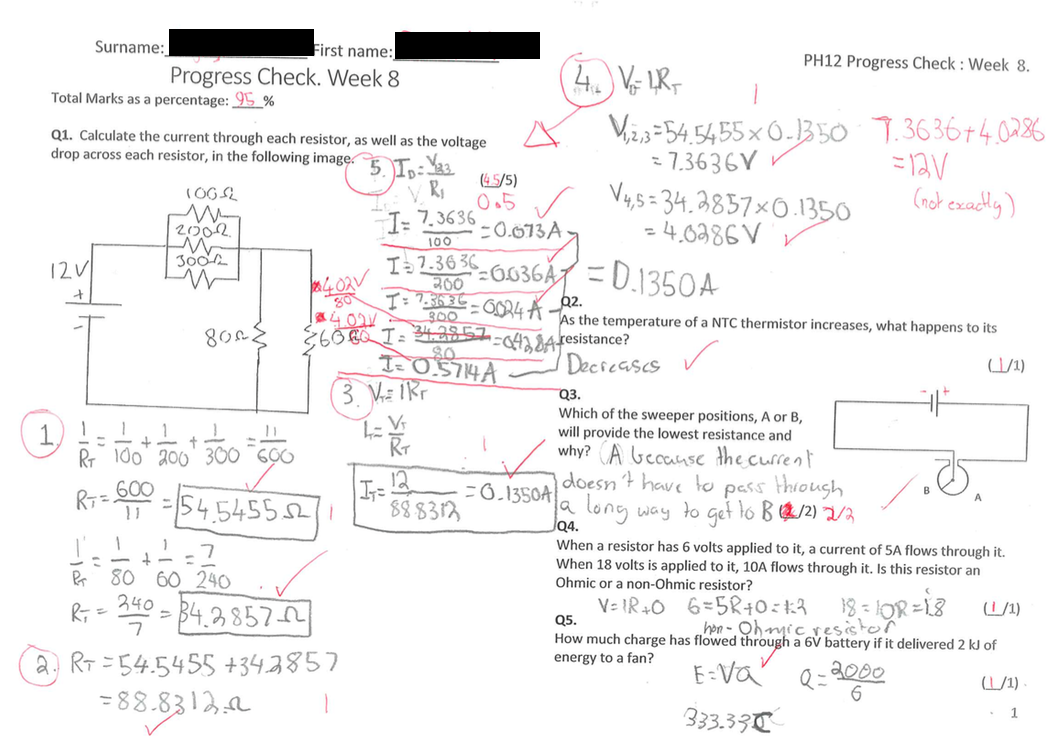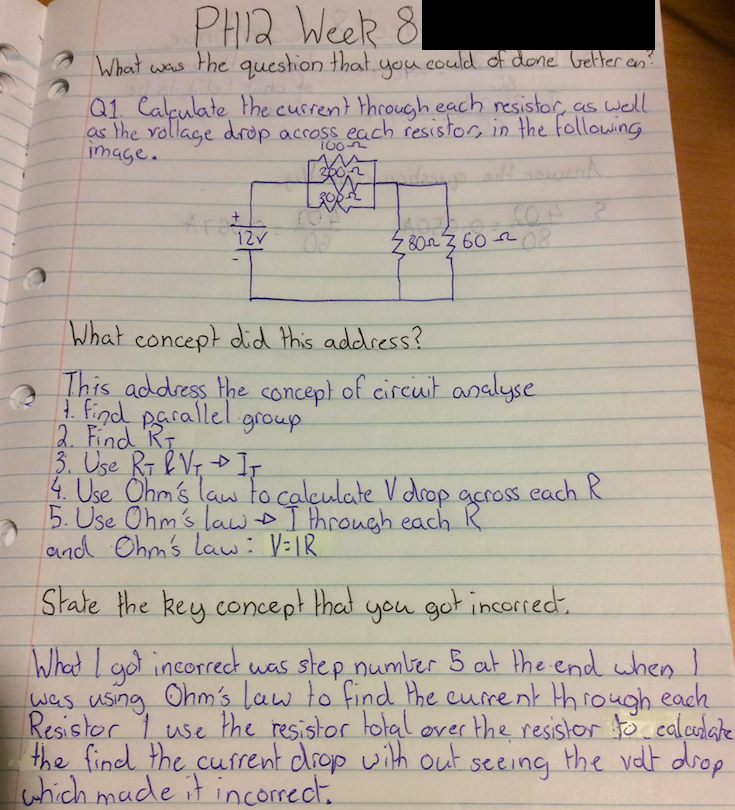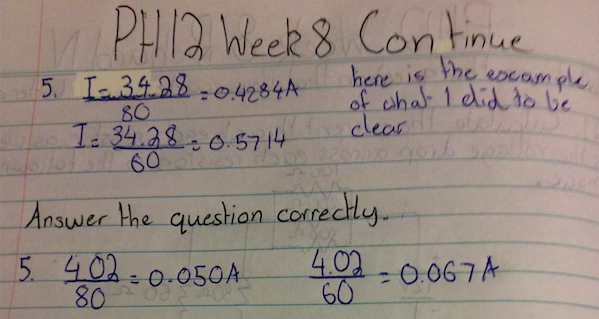We know that ‘Memory is the residue of thought' (Daniel Willingham) and that in order for our students to learn they must actively think about the content to be learnt. This allows this content to occupy their working memory for long enough, and become anchored to sufficient elements in their long term memory, to trigger a change in long term memory, one of the well respected definitions of ‘learning' (Paul Kirschner).
One of the arenas of teaching in which this can be most challenging is that of feedback delivery to students. Dylan Wiliam sums it up well in the following quote (Which I came across thanks to Alfie Kohn).
1/2: When kids receive grades AND comments, 1st thing they look at is the grade; 2nd thing they look at is…someone else’s grade -D William
— Alfie Kohn (@alfiekohn) January 19, 2017
Note: The original quote is “When students receive both scores and comments, the first thing they look at is their score, and the second thing they look at is…someone else’s score”, and can be found here (beware the paywall).
The challenge is, then, how do we give feedback to our students in a way that encourages them to actively think about their mistakes, and helps them to do better next time?
In the following I'll share how I give feedback to students in two contexts. The first is on low stakes assessments that I carry out in my own classroom, the second is on major assessment pieces that contribute towards their final unit mark.
Assessment Feedback on weekly Progress Checks.
Before we dive in I'll just paint a picture of how my weekly ‘Progress Checks' fit into my teaching and learning cycle, and how each of these elements is informed by education theory.
At the start of each week students are provided with a list of ‘weekly questions'. They know that the teaching during the week will teach them how to answer these questions. Questions are to be aligned with what we want students to be able to do (curriculum and exams) (Backwards Design). Students are provided with worked solutions to all questions at the time of question distribution (The worked example effect). The only homework at this stage of the cycle is for students to ensure that they can do the weekly questions.
Progress Checks' (mini tests, max 15 minutes) are held weekly (Testing Effect). Progress checks include content from the previous three weeks. This means that students see the main concepts from each week for a month (Distributed Practice). These PCs are low-stakes for year 11 students (contribute 10% to their final overall mark) and are simply used to inform teachers and students of student progress in year 12 (where assessment protocols are more specifically defined).
Edit: Here's a new post on how I use student responses to these PCs to construct the next PCs.
When designing the progress checks I had two main goals: 1) Ensure that students extract as much learning as possible from these weekly tests, 2) Make sure that marking them didn't take up hours of my time. The following process is what I came up with.
Straight after the PC I get students to clear their desks, I hand them a red pen, and I do a think-alound for the whole PC and get them to mark their own papers. This is great because it's immediate feedback and self marking (See Dylan Wiliam's black box paper), and it allows me to model the thinking of a (relative) expert, and to be really clear about what students will and won't receive marks for. Following this, for any student who didn't attain 100% on the progress check, they choose one question that they got incorrect and do a reflection on it based on 4 questions: 1) What was the q?, 2) Which concept did this address?, 3) What did you get wrong?, 4) What will you do next time?
Here are some examples of student self-marked progress checks and accompanying PC reflections from the same students (both from my Y11 physics class). Note: Photos of reflections are submitted via email and I use Gmail filters to auto-file these emails by class.
Note how this student was made aware of consequential of follow through marks on question 1.
Here's the PC reflection from this same student (based upon question 2).
Here's another students' self-marked Progress Check.
And the associated reflection.
Students are recognised and congratulated by the whole class if they get 100% on their progress checks, as well as one student from each class winning the ‘Best PC Reflection of the Week' award. This allows me to project their reflection onto the board and point out what was good about it, highlighting an ideal example to the rest of the class, celebrating students' successes, rewarding students for effort, and framing mistakes as learning opportunities.
I think that this process achieves my main two goals pretty well. Clearly these PCs form an integral learning opportunity, and in sum it only takes me about 7 minutes per class per week to enter PC marks into my gradebook.
Assessment Feedback on Mandated Assessment Tasks.
There are times when, as a teacher, we need to knuckle down and mark a bunch of work. For me this is the case on school assessed coursework (SACs), which contribute to my students' end of year study scores. I was faced with the challenge of making feedback for such a test as beneficial to my students' learning as the PC feedback process is, here's what I worked out.
- On test day, students receive their test in a plastic sheet and unstapled.
- At the start of the test, students are told to put their name at the top of every sheet.
- At the end of the test I take all of the papers straight to the photocopier and, before marking, photocopy the unmarked papers.
- I mark the originals (Though the photocopying takes some time I think that in the end this process makes marking faster because, a) I can group all page 1s together (etc) and mark one page at a time (this is better for moderation too) and b) because I write minimal written feedback because I know what's coming next…)
- In the next lesson I hand out students' photocopied versions and I go through the solutions with the whole class. This means that students are still marking their own papers and still concentrating on all the answers.
- Once they've marked their own papers I hand them back their marked original (without a final mark on it, just totals at the bottom of each page), they identify any discrepancies between my marking and their marking, then we discuss and come to an agreement. This also prompts me to be more explicit about my marking scheme as I'm being held to account by the students.
In Closing
I've already asked students for feedback on the progress checks through whole class surveys. The consensus is that they really appreciate them and they like the modelling of the solutions and self-marking also. One good thing is that putting together this post prompted me to contact my students and ask for feedback on the self-marking process of their photocopied mandated assessment task. I'll finish this post with a few comments that students said they'd be happy for me to share. It also provides some great feedback to me for next time .
I'd love any reflections that readers have on the efficacy of these processes and how they could potentially be improved.
From the keyboards of some of my students (3 males, 3 females, 5 from Y12, one from Y11).
Edit:
A fellow maths teacher from another school in Melbourne, Wendy, tried out this method with a couple of modifications. I thought that the modifications were really creative, and I think they offer another approach that could work really well. Here's what Wendy said.
Hey Ollie,
I used your strategy today with photocopying students' sacs and having them self correct. The kids responded so well!
Beyond them asking lots of questions and being highly engaged, those that I got feedback from were really positive saying how it made them look at their work more closely than they would if I just gave them an already corrected test, understood how the marking scheme worked (and seeing a perfect solution) and they liked that they could see why they got the mark they did and had ‘prewarning' of their mark.
Thanks heaps for sharing the approach.A couple of small changes I made were
- I stapled the test originally then just cut the corner, copied them and then restapled. It was very quick and could be done after the test without having to put each test in a plastic pocket
- I gave the students one copy of the solutions between two. Almost all kids scored above 50% and most around the 70% mark, and I didn't want them to have to sit through solutions they already had.
if you have thoughts/comments on these changes I'd love to hear them.
Thanks again!
References
Find references to all theories cited (in brackets) here.











One Reply to “Assessment feedback: Processes to ensure that students think!”
Comments are closed.